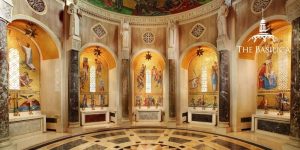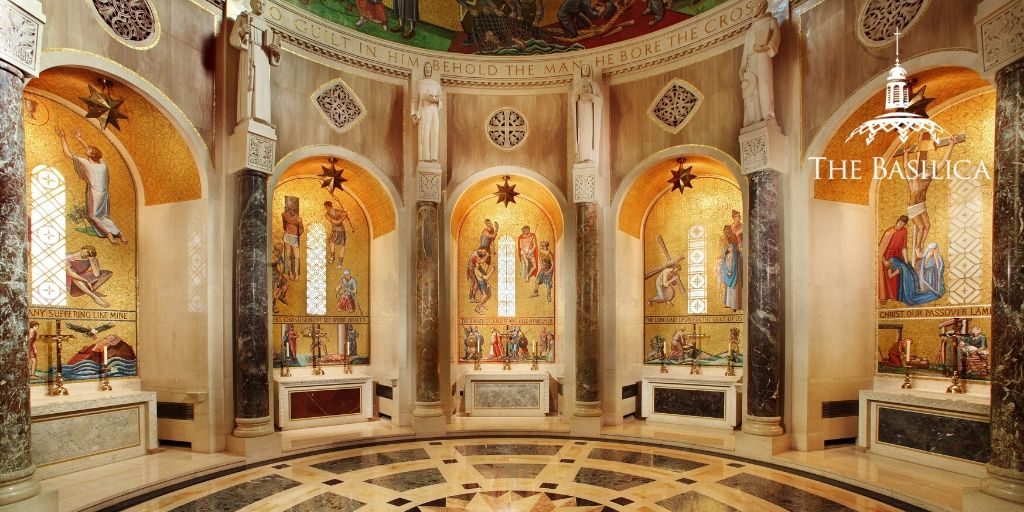
The Sorrowful Mysteries are traditionally prayed as part of the Rosary, providing the opportunity to meditate on events leading up to Christ’s death. Each of these mysteries has a parallel in the Old Testament, illuminating the continuity of Scripture throughout the ages. We invite you to reflect on this harmony and discover where each mystery is portrayed in the Basilica in the Sorrowful Mysteries Chapels and the Rosary Walk and Garden.
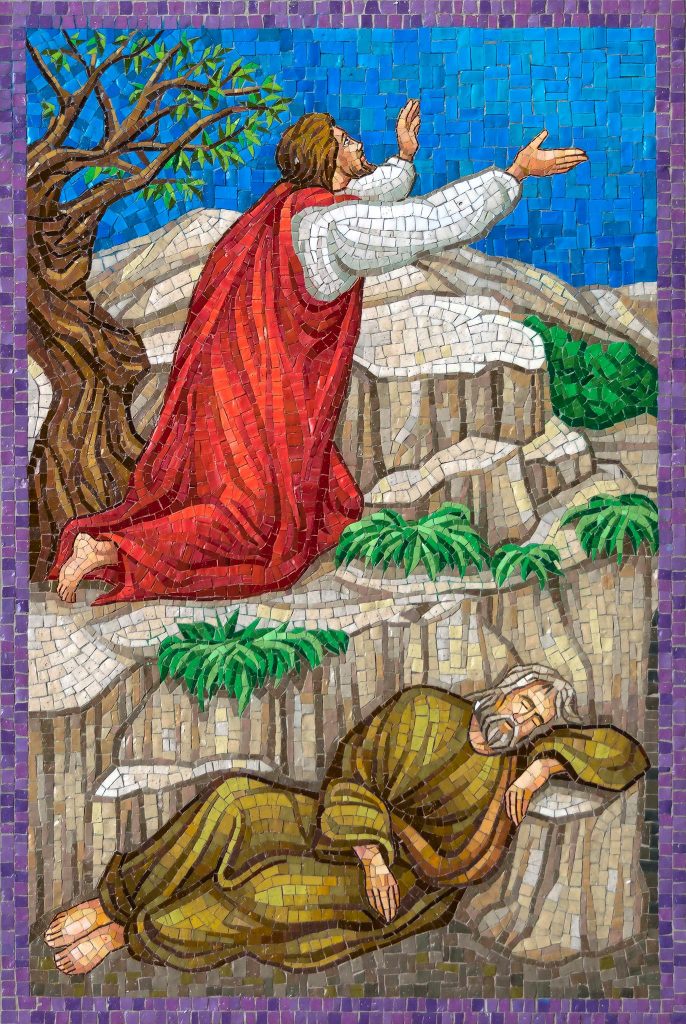 The First Mystery: Agony in the Garden
The First Mystery: Agony in the Garden
It was in the Garden of Eden that man’s relationship with God was first broken. After Adam and Eve sinned, God banished them from the Garden (Genesis 3:23-24).
In the New Testament, Jesus, both the Son of God and the son of Adam, submitted himself to the Father’s will in the Garden of Gethsemane. There, he began to restore man’s relationship to God by offering himself as sacrifice for the sins of the world. Matthew 26:42 describes:
Withdrawing a second time, he prayed again, “My Father, if it is not possible that this cup pass without my drinking it, your will be done!”
Both of these scenes are portrayed in the First Sorrowful Mystery Chapel, where the scenes are connected by the verse, “See if there is any suffering like mine,” from Lamentations 1:12. Christ’s prayer in the Garden of Gethsemane is also portrayed in the Rosary Walk and Garden.
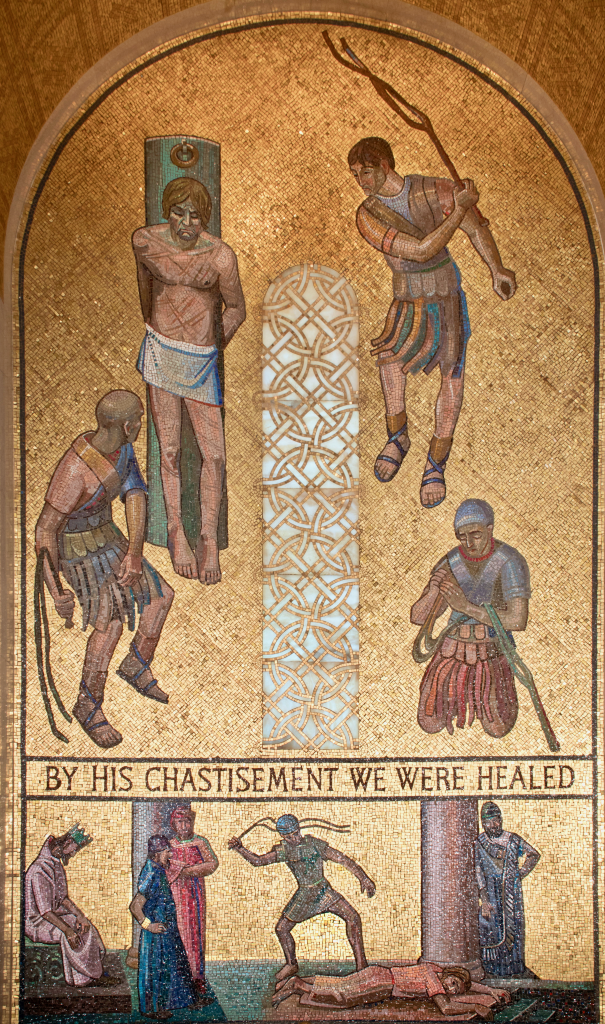 The Second Mystery: Scourging at the Pillar
The Second Mystery: Scourging at the Pillar
In the Old Testament, the prophet Jeremiah was unjustly beaten and imprisoned. Jeremiah 38:13-16 tells us:
But at the Gate of Benjamin, the captain of the guard, by the name of Irijah, son of Shelemiah, son of Hananiah, arrested Jeremiah the prophet, saying, “You are deserting to the Chaldeans!” “That is a lie!” Jeremiah answered, “I am not deserting to the Chaldeans.” Without listening to him, Irijah kept Jeremiah in custody and brought him to the princes.
The princes were enraged at Jeremiah and had Jeremiah beaten and imprisoned in the house of Jonathan the scribe, for they were using it as a jail. And so Jeremiah went into a room in the dungeon, where he remained many days.
This foreshadowed the unjust arrest and scourging of Jesus Christ, described in John 19:1. Pontius Pilate conducted his trial and knew Jesus was not guilty, yet in order to satisfy the crowds, he ordered him to be beaten (Luke 23:14-16).
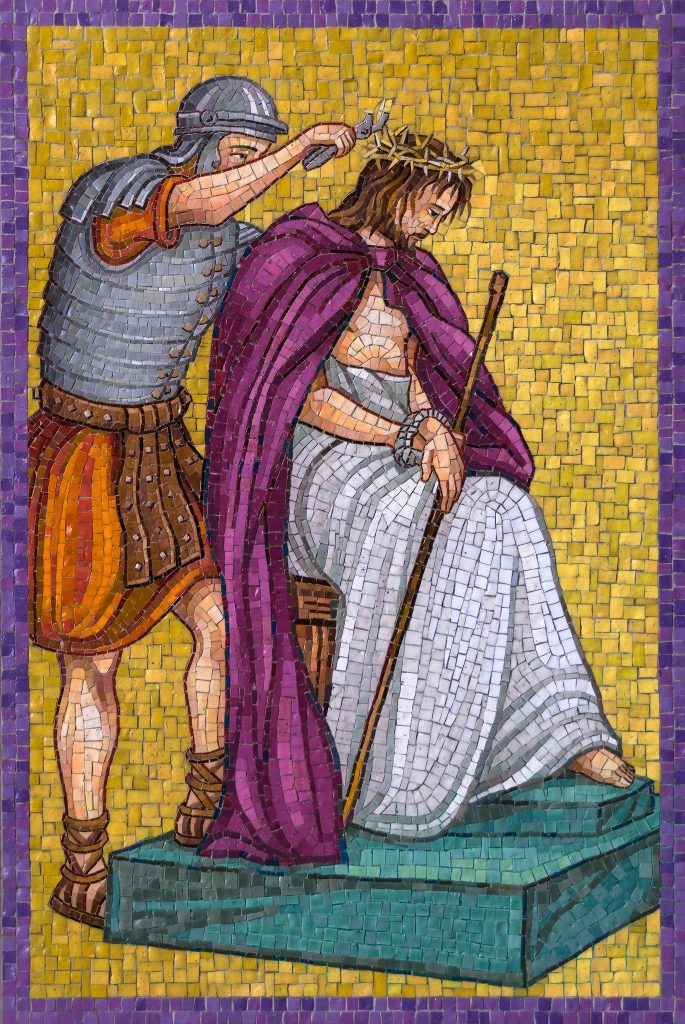 The Third Mystery: Crowning with Thorns
The Third Mystery: Crowning with Thorns
The Third Mystery is described in John 19:2-3:
And the soldiers wove a crown of thorns and put it on his head, and they dressed him in a purple robe. They kept coming up to him, saying, “Hail, King of the Jews!” and striking him on the face.
The Old Testament foreshadowing of this mystery is the tale of King Jehoiachin, who displeased the Lord in surrendering to Nebuchadnezzar. 2 Kings 24:8-14 tells us:
Jehoiachin was eighteen years old when he began to reign; he reigned three months in Jerusalem… He did what was evil in the sight of the Lord, just as his father had done. At that time the servants of King Nebuchadnezzar of Babylon came up to Jerusalem, and the city was besieged. King Nebuchadnezzar of Babylon came to the city, while his servants were besieging it; King Jehoiachin of Judah gave himself up to the king of Babylon, himself, his mother, his servants, his officers, and his palace officials. The king of Babylon took him prisoner in the eighth year of his reign.
Whereas Judah fell to an unjust king, in the New Testament, Christ, the true king, was mocked while his kingship was denied by earthly authorities. In contrast to Jehoiachin, Jesus’ silent submission to his captors did not mark the defeat of the Kingdom of God.
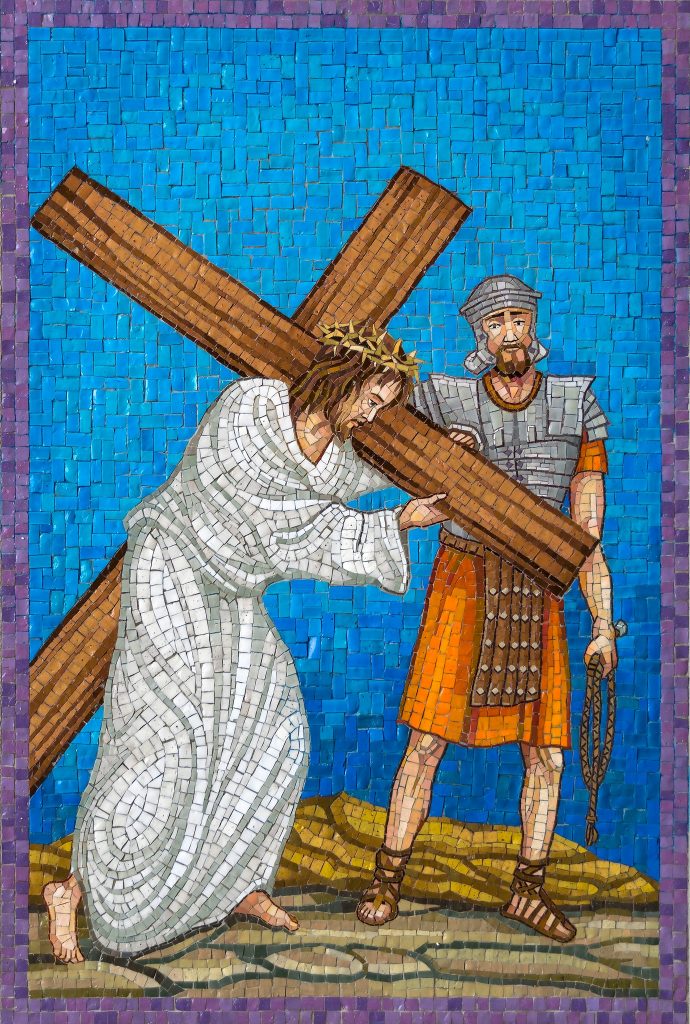 The Fourth Mystery: Carrying of the Cross
The Fourth Mystery: Carrying of the Cross
In the Old Testament, Isaac, obedient to his father Abraham, carried wood up the hill for their sacrifice (Genesis 22:6-10). Similarly, in the New Testament, Jesus carried the cross to Golgotha, where he would offer himself as the ultimate sacrifice, obeying the will of his Father (Luke 23:26). In doing so, he placed his complete trust in the Father in the midst of his unspeakable suffering. As Pope John Paul II has noted:
“The suffering Christ still dwells among the men and women of today. In order to reveal his power, God has come to share our deepest misery. In every person who is afflicted, beaten, mistreated, rejected, we can discover the Lord who travels the paths of humanity bearing his cross. Dear friends, the Crucified One is ever with you, by the side of those who toil, who suffer, who die. All of you who toil and labor under your burden, come to where Christ dwells, carry your cross with him, present him the offering of your lives, and he will give you rest (cf. Mt 11:28).”
In the Carrying of the Cross Chapel, these two scenes are joined by the text of Isaiah 53:6: “The Lord laid upon him the guilt of us all.”
 The Fifth Mystery: Crucifixion
The Fifth Mystery: Crucifixion
In the book of Exodus, the Israelites were spared from death by painting the blood of a lamb over their doorways (Exodus 12:1-13). Similarly, Jesus, the Lamb of God, saved the world from eternal death by shedding his blood on the cross. Luke 23:44–47 tells us:
It was now about noon and darkness came over the whole land until three in the afternoon because of an eclipse of the sun. Then the veil of the temple was torn down the middle. Jesus cried out in a loud voice, “Father, into your hands I commend my spirit”; and when he had said this he breathed his last. The centurion who witnessed what had happened glorified God and said, “This man was innocent beyond doubt.”
Throughout all the Sorrowful Mysteries, one theme is abundantly clear: Christ’s attitude throughout all of his trials and suffering is one of obedience, and submission to the will of God. This Lenten season, may we also submit ourselves fully to the will of the Father, trusting in his divine plan.
The east apse and the chapels of the Sorrowful Mysteries are the gifts of Franciscan priests, brothers, sisters, and tertiaries of the United States.

